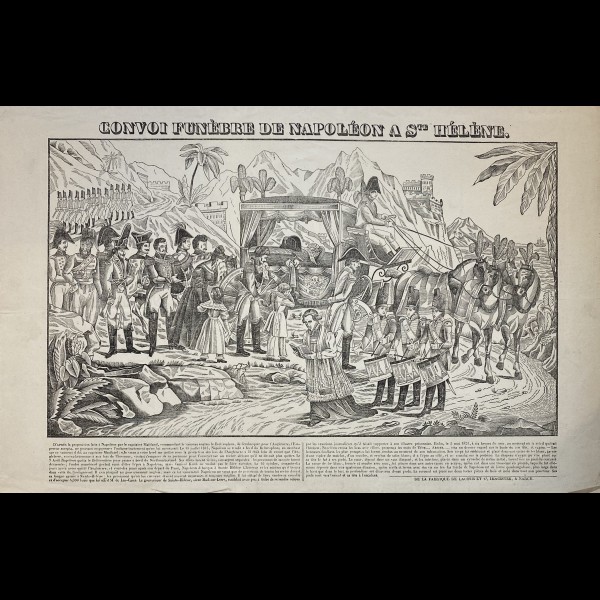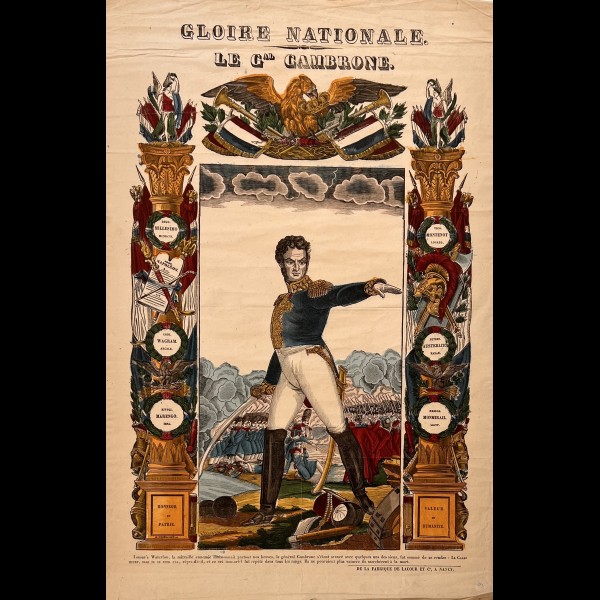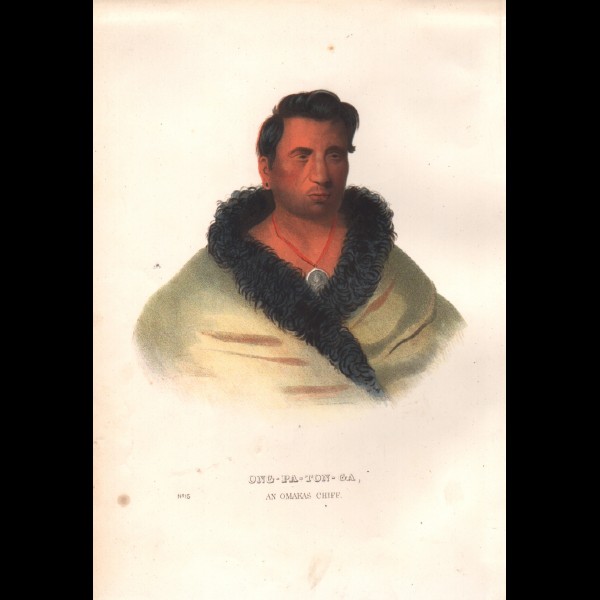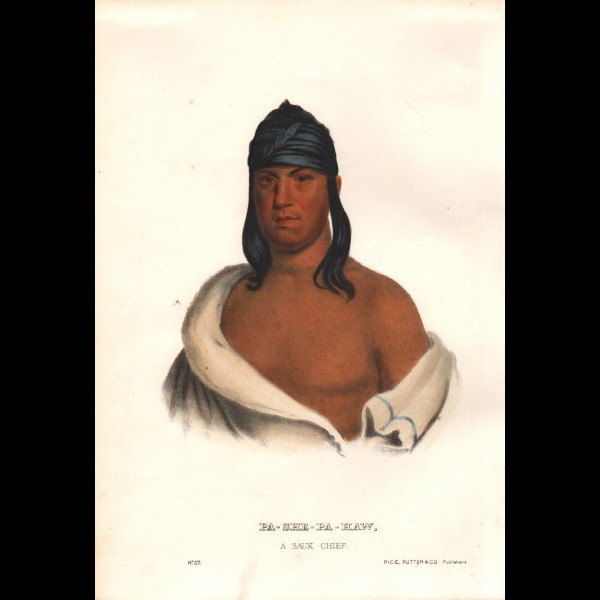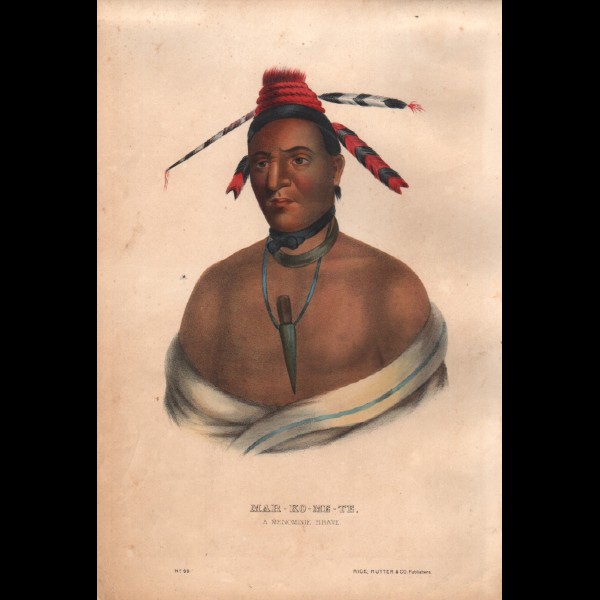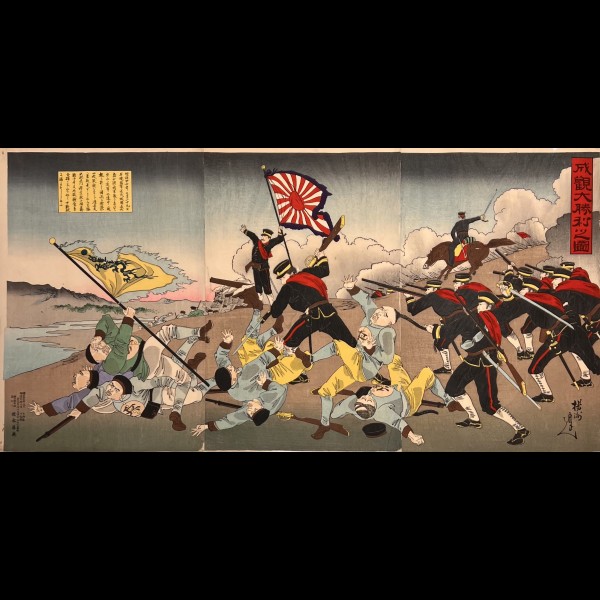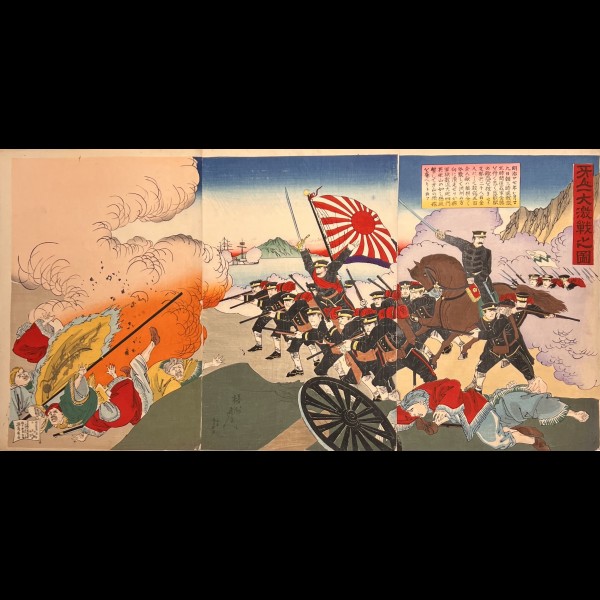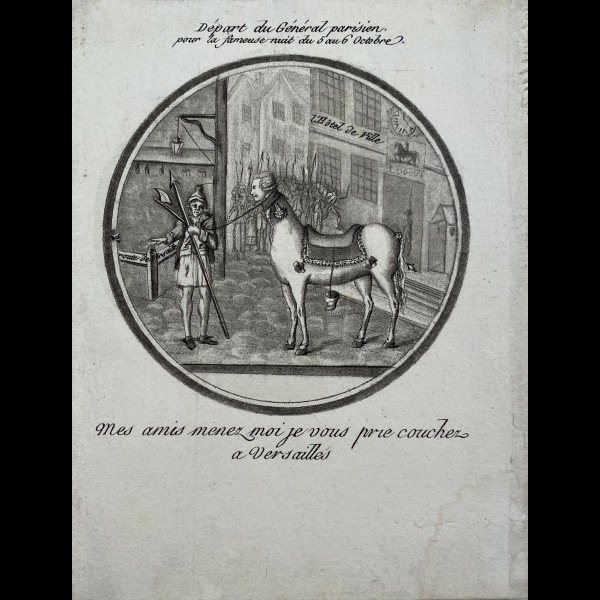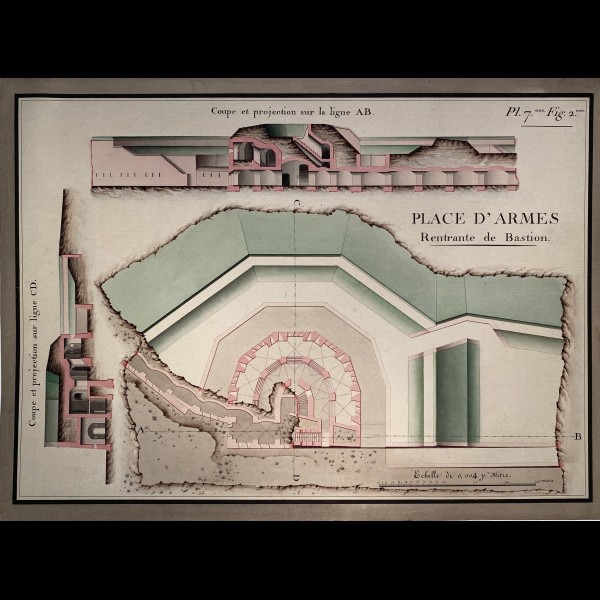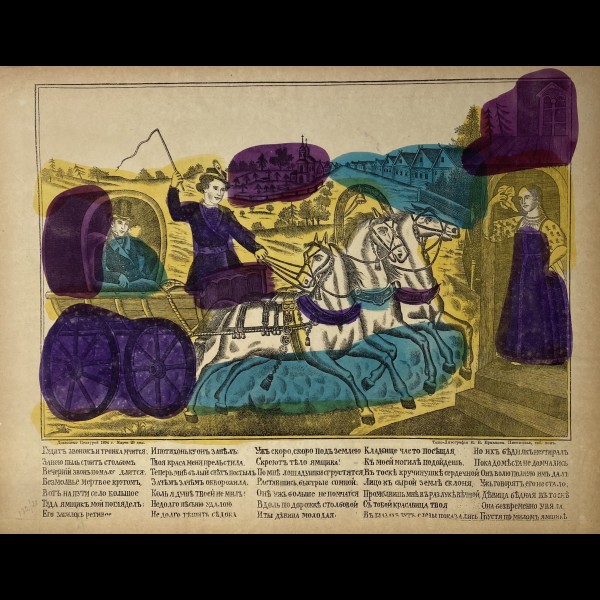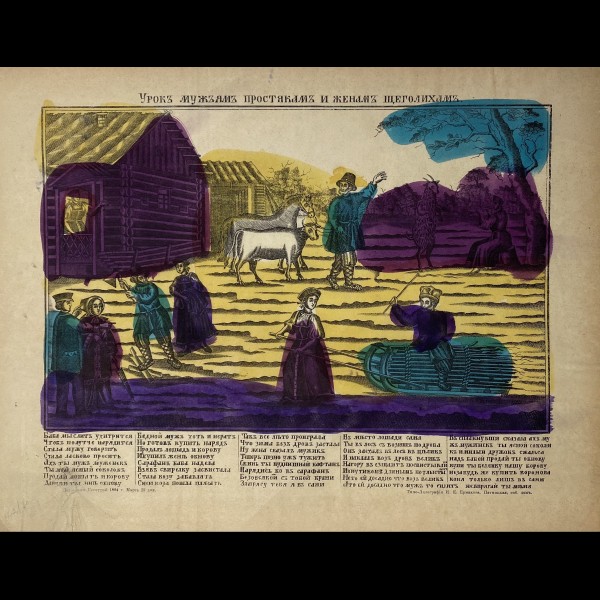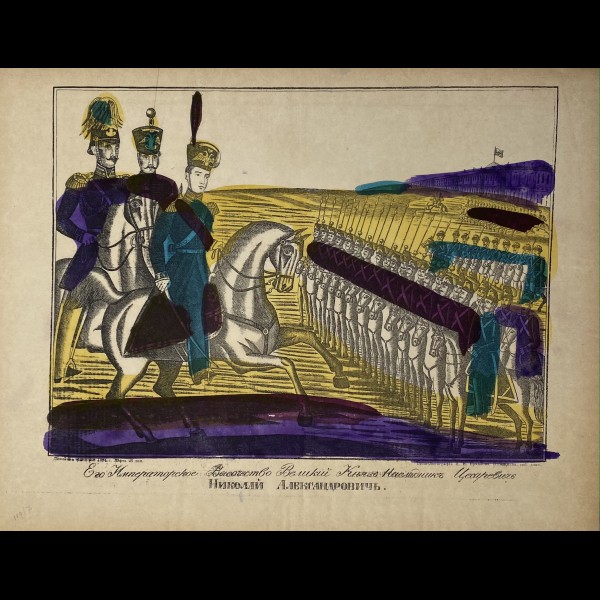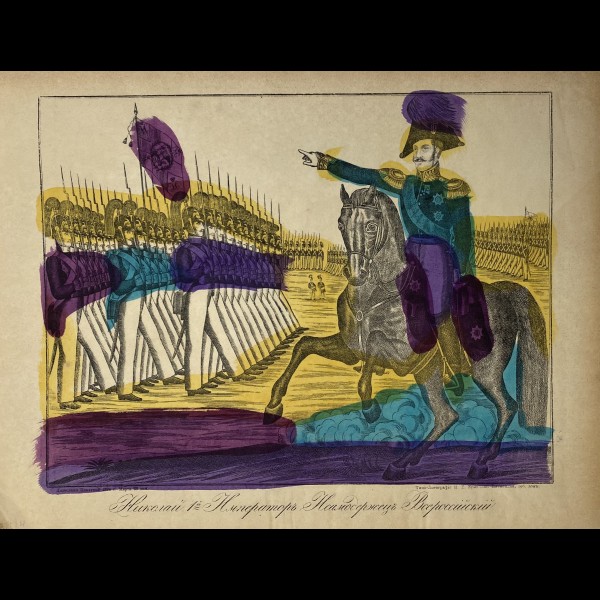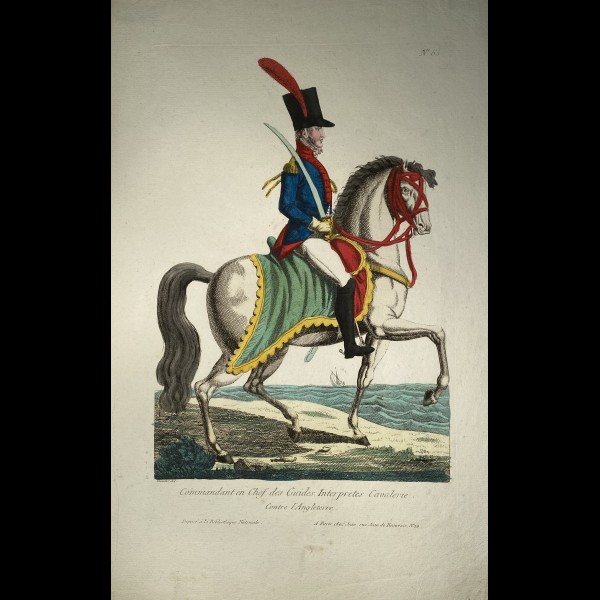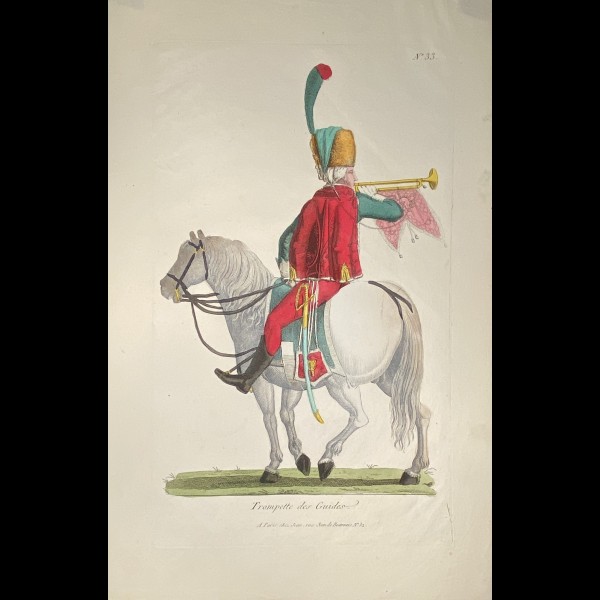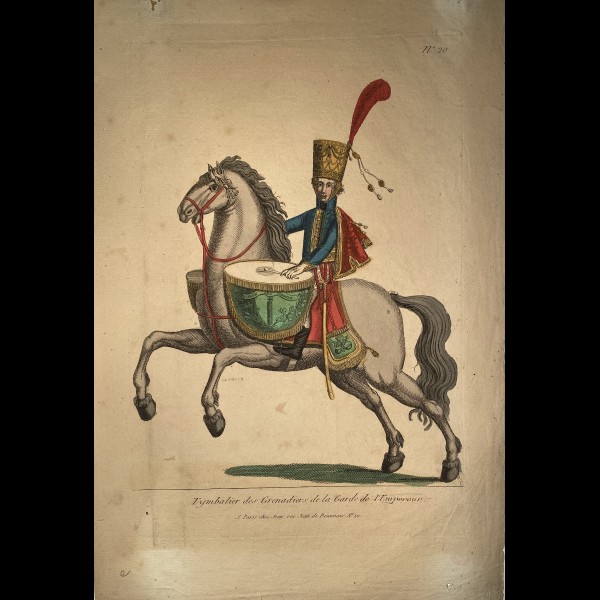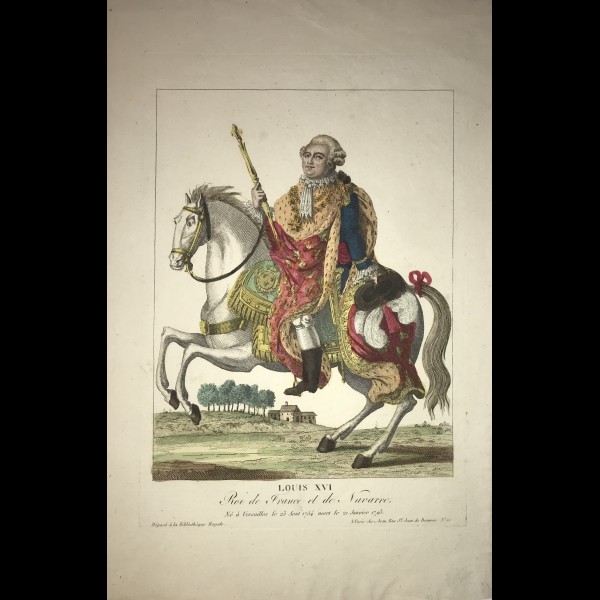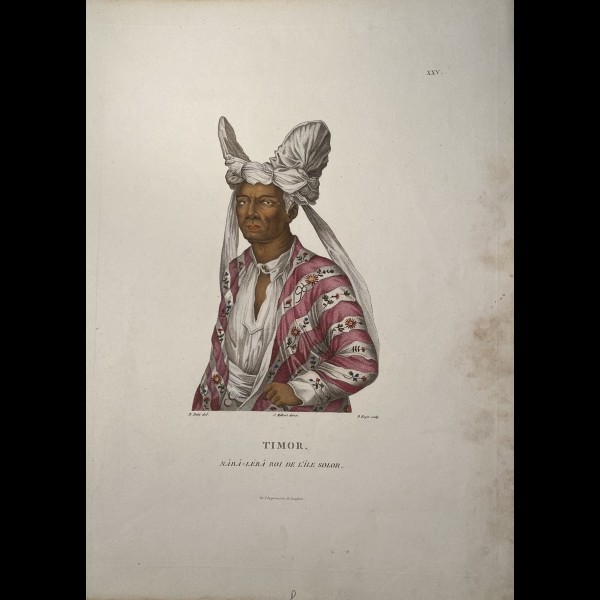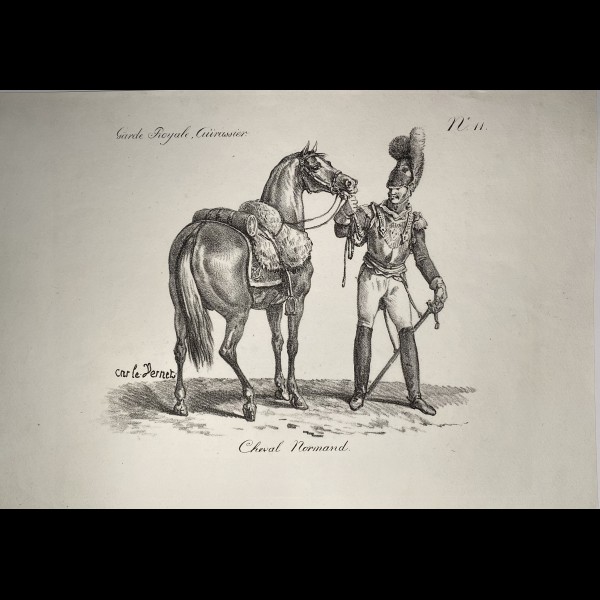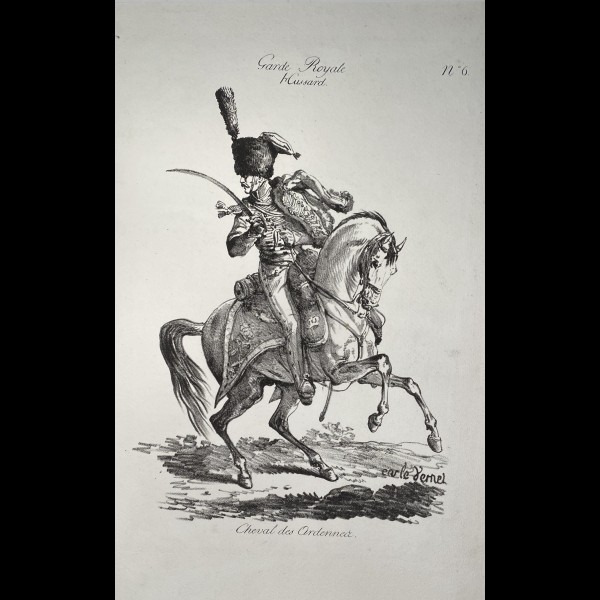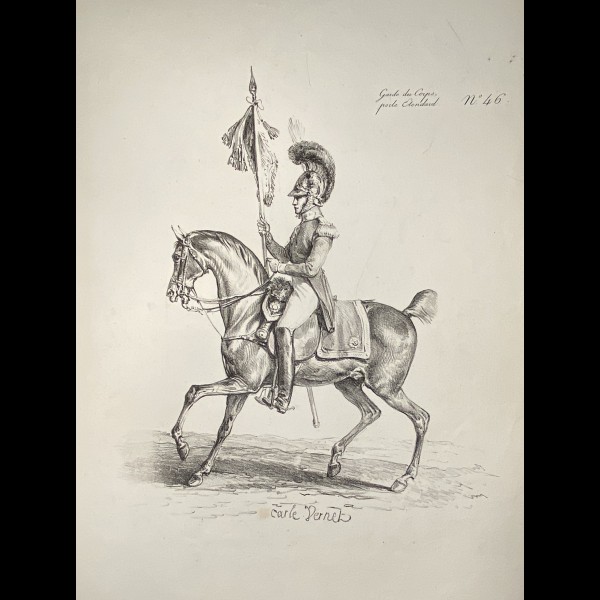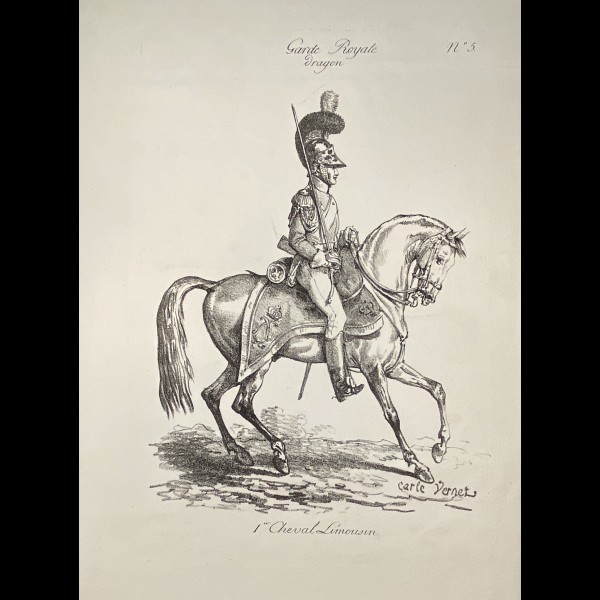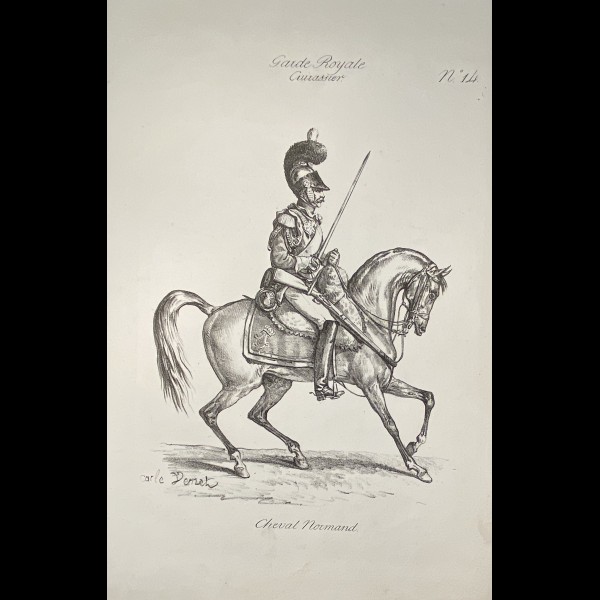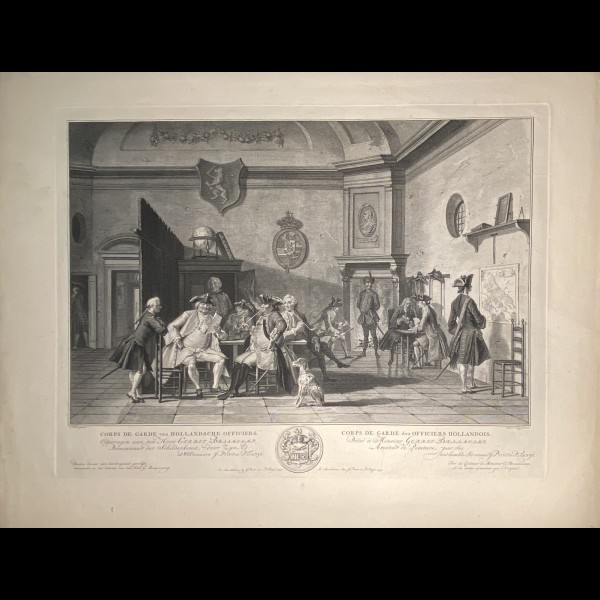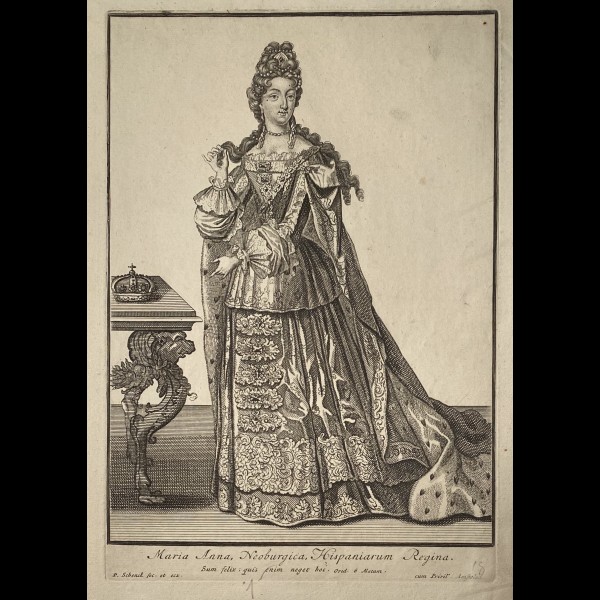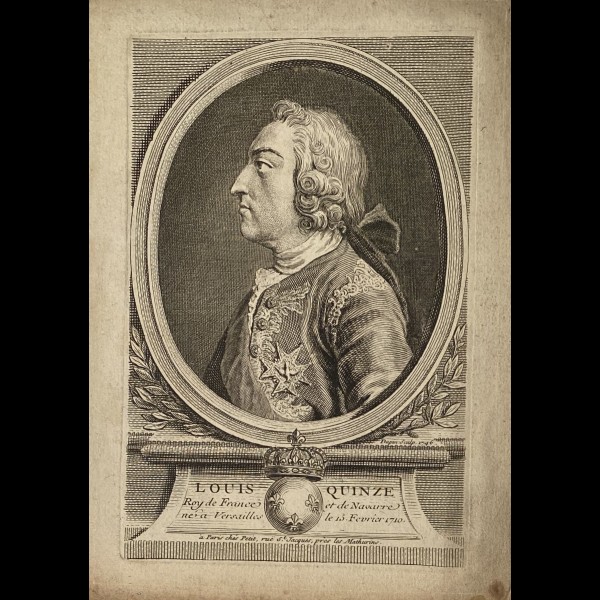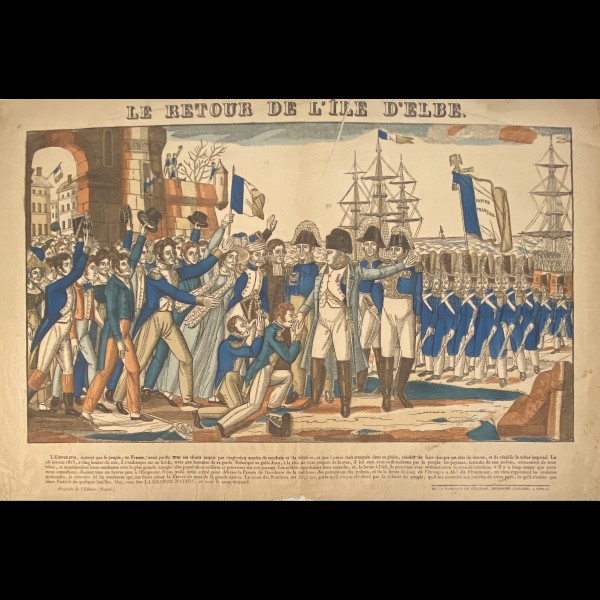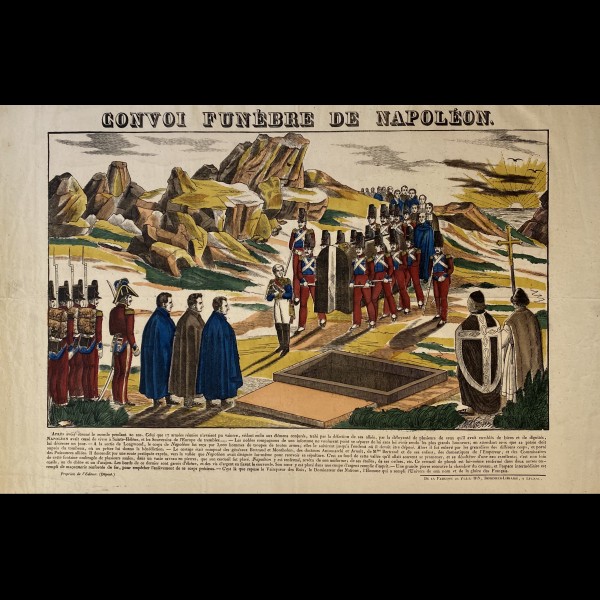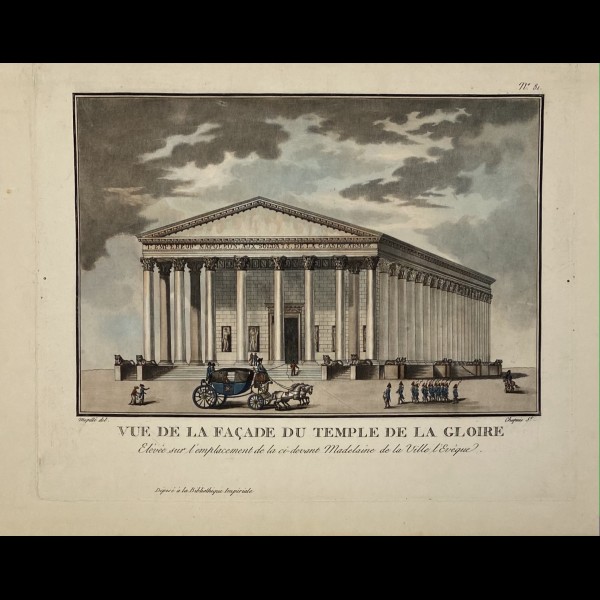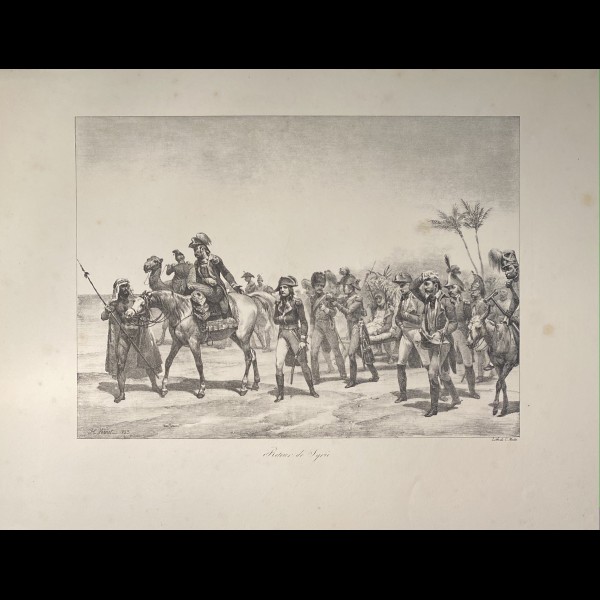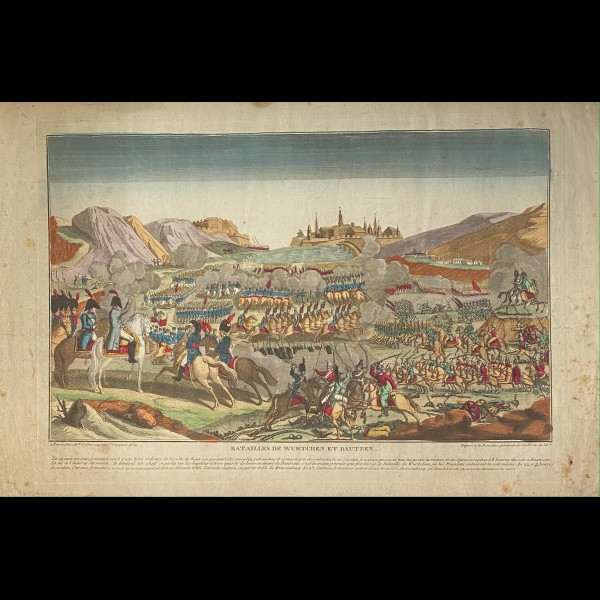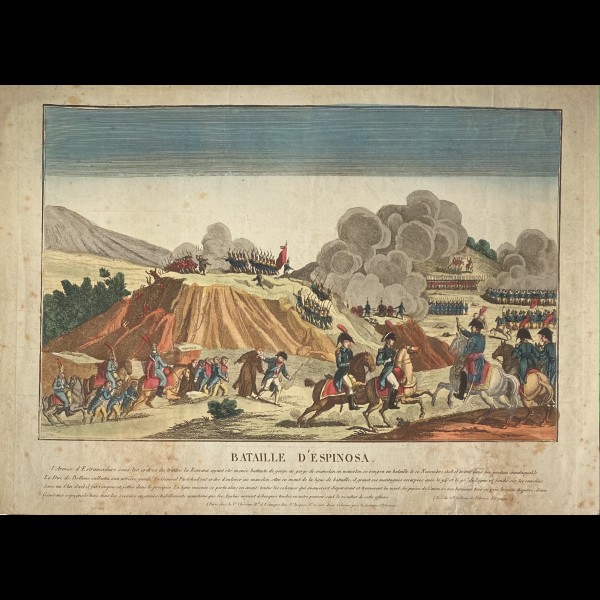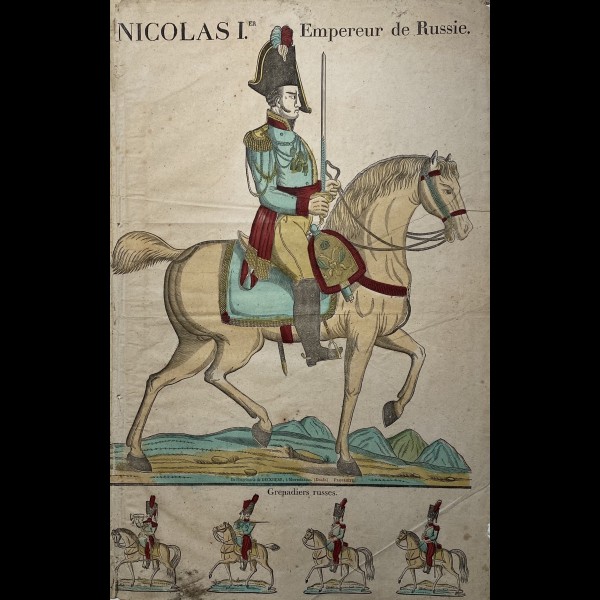CONVOI FUNEBRE DE NAPOLEON A STE HELENE.
LACOUR (JACQUES STANISLAS PROSPER HUBERT DIT) (actif 1830-1836)Imaging of the Lacour factory in Nancy. Proof prior to 1835 or 1836 before the change of address in favor of Dembour. (Lacour sold all his woods to Dembour in 1835 or 1836. (Duchartre and Saulnier : "' L'imagerie populaire", p.217)). Very nice print on laid paper with all margins, two median folds, a few folds and tiny tears in the borders...
GLOIRE NATIONALE. LE GENERAL CAMBRONE ( SIC )
THIÉBAULT JEAN-BAPTISTE (1809-1838)Very fine proof in fresh old colors with full margins on laid paper.Edited by Jacques Stanislas Prosper HUBERT dit LACOUR, active from 1830 to 1836.Printer-publisher installed in Nancy around 1830 Faubourg Saint Georges, then in Faubourg Saint Pierre n°49 and 250, he bought some Beauvais woods which he republished, then he ensured the collaboration of Jean-Baptiste Thiébault who constituted the collection of his factory. Dembour bought back his fund in 1837 to transfer it to Metz.Several creases, short tear in bottom margin, pinhole at bottom of Cambrone's waistcoat.Très belle épreuve en frais coloris anciens à toutes marges sur papier vergé...
ONG-PA-TON-GA
ANONYMEBeautiful lithography in color of the time, small task in the margin of the bottom left not affecting the subjectPlate 15 of the History of the Indian Tribes of North America..
CHASSEUR DE LA GARDE IMPERIALE RUSSE
ANONYMEBeautiful Watercolors from the set : Troupes étrangères, Plate 10, Russian Imperial Guard Hunter..
MAR-KO-ME-TE
ANONYMEFrom the set The History of the Indian Tribes of North America, Thomas McKenney, James Hall, 1836-1844.Most of the portraits in The History of the Indian Tribes of North America were painted by Charles Bird King (1785-1862) Beautiful lithography in time colors, gaps in the lower corners, trace of glue on the right side..
LE DUCOUEDIC
SABATIER LEON JEAN-BAPTISTE (CA.1827-1887)velBeautiful print, wide margins from the setTr to the East Coast of Africa, executed during the years 1846, 1847 and 1848 by the brig Ducouëdic, under the command of Mr. Guillain..
LE DUCOUEDIC ARRIVANT AU MOUILLAGE A BRAOUA
SABATIER LEON JEAN-BAPTISTE (CA.1827-1887)Beautiful lithography with large margins from the set Travel on the eastern coast of Africa, executed during the years 1846, 1847 and 1848 by the brig Ducouëdic, under the command of Mr. Guillain..
BATAILLE DE SEONGHWAN
CHIKANOBU TOYOHARA (1838–1912)Beautiful triptych in very fresh colors formerly mounted on tabsObanNishiki-e1894The Battle of Seonghwan (Seikan) was the first major land confrontation of the First Sino-Japanese War. It took place on July 29, 1894 in Seonghwan, near Cheonan, in the Korean province of South Chungcheong. It is sometimes called Battle of Asan...
VICTOIRE A ASAN
CHIKANOBU TOYOHARA (1838–1912)Beautiful triptych in very fresh colors formerly mounted on tabsObanNishiki-e1894 "At 3 am on July 29 a battle commenced and after five hours our troops were completely victorious" begins the text panel account of this print. Chikanobu depicts two officers leading the assault with the nation's flag held high. A Chinese canon in the foreground is turned around with its barrel down and its carriage broken. The Chinese soldiers in this print are dressed in cumbersome archaic uniforms, making them seem helpless against the Japanese troops smartly dressed in modern European style uniforms.The Battle of Seonghwan (Seikan) was the first major land confrontation of the First Sino-Japanese War. It took place on July 29, 1894 in Seonghwan, near Cheonan, in the Korean province of South Chungcheong. It is sometimes called Battle of Asan...
SAUMUR ECOLE DE CAVALERIE, TRAVAIL INDIVIDUEL
ADAM ALBERT ( 1833-1900 )"Important work of a careful execution, interesting not only from the point of view of the exercises represented, but also to that of the uniforms of the cav [alery] at the end of the Second Empire"(Mennessier de la Lance). Imprimerie Lemercier Paris, 1869 Reference: Mennessier of the Lance I, 436..
TRAIT HEROIQUE DU GENERAL BONAPARTE
LETOURMY JEAN BAPTISTE (1747-1800)Heroic trait of General Bonaparte, Commander-in-Chief of the Army of Italy Orleans, at Letourmy Librarian, [ca. 1796]. Engraved print on wood, colored with stencil 355 X 300 mm (image)430 X 360 (with the coaster)"Specialized in publishing books peddling, religious images and papers dominated, the bookseller Orleans Jean- Baptist Letourmy (1747-1800), during the Revolution, renounced the distribution of engravings representing saints or doctors of the Church, and then turned to the publication of images inspired by political or military events, in Most of the time, he copies Parisian soft-cuts, and his huge distribution network, which has about a hundred dealers in some 60 cities, contributes to the dissemination of Bonaparte's deeds. present on the bridge with Bonaparte, does not appear and that the "historical relationship" printed at the bottom of the engraving forget to mention that Bonaparte was immediately after this episode entrained in the flight of his grenades.The victory was acquired only the next day, but the Arcole bridge became one of the greatest myths of the Napoleonic legend. "in Heros, The virtual exhibition, BNFReference: BnF, Library Arsenal, Print 222 (118)..
LE SANS TORT LA FAYETTE QUITTE L'HOTEL DE VILLE POUR VERSAILLES
ANONYME XVIIIèOr : "Départ du général parisien pour la fameuse nuit du 5 au 6 octobre : - mes amis menez moi je vous prie couchez a Versailles" .Ca.1791-1792.Pretty copper cut aquatint.Zoomorphic caricature mocking the delay of La Fayette, represented here as a centaur, during the days of October 5 and 6, 1789. This episode earned him the nickname of "General Morpheus" attributed by Rivarol.In the context of the revolution, during the days of October 5 and 6, 1789, a crowd, composed mainly of women, went from Paris to Versailles, to demand bread from Louis XVI as well as the replacement of his bodyguards. majesty by the National Guard, then commanded by La Fayette. In addition, the Constituent Assembly demanded that same day the ratification of the decrees relating to the constitution and the declaration of rights. At the end of these days, she ended up asking for the king to come to Paris, but on this point, Louis XVI left the night to reflect, but on October 6, he was awakened by a more vindictive crowd. Now in charge of the security of the castle, La Fayette, arrived too late at Versailles, and was unable to prevent its murderous invasion but nevertheless saved the royal family who were taken to Paris.The Constituent Assembly will be called there a few days later, on October 19...
PLAN D'ARCHITECTURE, PLACE D'ARMES RENTRANTE DE BASTION
ANONYME XIXèSection and projection of a bastionWatercolor, late 19th century..
TROIKA
ANONYME XIXèLarge margins, very fresh colors, some folds.1894Loubok (Russian: Лубок), or loubki in the plural, is a popular Russian print usually engraved on wood. Loubki are inspired by literature, religious and popular stories. Loubki were born around the 17th century and were sold in markets until the 1950s. They are part of the line of popular imagery that developed in Europe from the end of the 15th century, which saw flourish. many pamphlets, booklets, which are neither books nor newspapers...
LECONS POUR LES EPOUX
ANONYME XIXèLarge margins, very fresh colors, some folds.1894Loubok (Russian: Лубок), or loubki in the plural, is a popular Russian print usually engraved on wood. Loubki are inspired by literature, religious and popular stories. Loubki were born around the 17th century and were sold in markets until the 1950s. They are part of the line of popular imagery that developed in Europe from the end of the 15th century, which saw flourish. many pamphlets, booklets, which are neither books nor newspapers...
LE TSAREVITCH NIKOLAI ALEKSANDROVITCH ROMANOV
ANONYME XIXèLarge margins, very fresh colors, some folds.1894Loubok (Russian: Лубок), or loubki in the plural, is a popular Russian print usually engraved on wood. Loubki are inspired by literature, religious and popular stories. Loubki were born around the 17th century and were sold in markets until the 1950s. They are part of the line of popular imagery that developed in Europe from the end of the 15th century, which saw flourish. many pamphlets, booklets, which are neither books nor newspapers...
NIKOLAI I EMPEREUR DE TOUTES LES RUSSIES
ANONYME XIXèLarge margins, very fresh colors, some folds.1894Loubok (Russian: Лубок), or loubki in the plural, is a popular Russian print usually engraved on wood. Loubki are inspired by literature, religious and popular stories. Loubki were born around the 17th century and were sold in markets until the 1950s. They are part of the line of popular imagery that developed in Europe from the end of the 15th century, which saw flourish. many pamphlets, booklets, which are neither books nor newspapers...
GUILLAUME IV ROI D'ANGLETERRE
ANONYME XIXèVery beautiful and large equestrian portrait in period colors of Montbéliard printed by Deckherr. Between 1813 and 1829 Several handling folds, median fold, tiny scattered foxing, left margin cropped at the border of the subject, small tear and missing in the right margin. The Imprimerie de Deckherr is an association formed for 20 years, by contract of October 26, 1812, between the sons of the printer-bookseller of Montbéliard Jean-Théophile Deckherr (1748-1823): Théophile-Frédéric (1776-1848) , printer-bookseller in Porrentruy and Montbéliard, Rodolphe-Henri (1785-1848?), then hardware merchant in details and manufacturer of playing cards, and Léopold-Hermann (1790-18 ..), then bookseller in Porrentruy . The three brothers publish under the name : Brothers Deckherr, Deckherr brothers or simply : Deckherr printing house. After 1832, the association seems to have reformed only occasionally...
TROMPETTE DU 9EME REGIMENT DE DRAGONS
CHEZ JEAN, EDITEUR ( CA.1820-1830 )Parisian imagery on laid paper, stamped on the back of the Dr Hutin collection.Ca.1820-1830Proof cut to the limit of copper on the outer edges...
MG. LE DUC D'ORLEANS, COLONEL GENERAL DE HUSSARDS
CHEZ JEAN, EDITEUR ( CA.1820-1830 )Beautiful equestrian portrait of Duke of Orleans.Parisian imagery with all margins, bearing the stamp on the back of the collection of Dr Hutin .Ca. 1820-1830..
COMMANDANT EN CHEF DES GUIDES. INTERPRETES CAVALERIE. CONTRE L'ANGLETERRE
CHEZ JEAN, EDITEUR ( CA.1820-1830 )Parisian imagery on laid paper with all margins, stamped on the back of the collection of Dr Hutin.Ca.1820-1830..
TROMPETTES DES GUIDES
CHEZ JEAN, EDITEUR ( CA.1820-1830 )Parisian imagery on laid paper with all margins, stamped on the back of the collection of Dr Hutin.Ca.1820-1830..
TYMBALIERS (SIC) DES GRENADIERS DE LA GARDE DE L'EMPEREUR
CHEZ JEAN, EDITEUR ( CA.1820-1830 )Parisian imagery on laid paper bearing stamp on the back of the Dr Hutin collection.Ca.1820-1830Uniform yellowing and small tear in the upper margin...
LOUIS XVI
CHEZ JEAN, EDITEUR ( CA.1820-1830 )Beautiful equestrian portrait of Louis XVI.Parisian imagery with all margins, bearing the double stamp on the back of the collection of Dr Hutin and another brand not listed by Lugt: "M" surmounted by a crown in a circle...
SCHAH ORANGZEF
OGILBY JOHN ( 1600-1676 )Shahab-ud-din Muhammad Khurram (January 5, 1592 - January 22, 1666) better known by his reign name Shâh Jahân (or Chah Djahan; King of the world) was the fifth Mughal emperor, who reigned from 1628 to 1658. From John Ogilby's edition of Arnoldus Montanus's 'Asia', 1673...
SEGUM SAHEB
OGILBY JOHN ( 1600-1676 )A full length portrait of Jahanara Begum (1614-81), eldest daughter of Emperor Shah Jahan. Ogilby's text refers to her as 'Begum Saheb', 'My Lady Princess'. From John Ogilby's edition of Arnoldus Montanus's 'Asia', 1673...
SCHACH SELIM
OGILBY JOHN ( 1600-1676 )Nur-ud-din Mohammad Salim (1569-1627), known by his imperial name Jahangir (conqueror of the world), was the fourth Mughal Emperor who ruled from 1605 until his death in 1627. He is considered to be one of the greatest Indian Emperors and the fourth of the Grand Mughals.. From John Ogilby's edition of Arnoldus Montanus's 'Asia', 1673...
TIMOR
BARTHELEMY ROGER ( 1767-1841 )Naba-leba, king of Solor Island.From the set : Journey of discoveries to the southern lands by order From S.M. The Emperor Etroi, Langlois, [1807]Traces of humidity in the right outer margin...
CORPS DE GARDE DES OFFICIERS HOLLANDOIS
TANJE PIERRE ( 1706-1760/61? )Print engraved in collaboration with Jan Punt (1711-1779) after Troost.1754.Le Blanc: 14..
FRANCE INFANTERIE DE LIGNE TAMBOUR MAJOR
DRANER ( RENARD JULES JOSEPH GEORGES DIT ) (1833-1926 )From the set : Types militaires, Galerie militaire de toutes les nations Paris Imprimerie Lemercier et Cie 1862-1871Scattered freckles...
MARIA ANNA, NEOBURGICA, HISPANIARUM REGINA
SCHENCK PIETER (1660-1718/19)Small traces in the upper right, two writing remains in the tablet and the bottom margin...
LOUIS XV
DUPIN PIERRE ( 1718-? )Slight dusting mainly in the margins, two small spots in the lower right corner...
LE RETOUR DE L'ILE D'ELBE
GEORGIN FRANCOIS ( 1801-1863 )Imaging on Epinal laid paper from Maison Pellerin. 1840 Proof in very fresh colors, with all margins, handling and printing folds, pinholes in the outer borders, lack in the bottom margin, traces of humidity on the right border, mainly visible on the back...
CONVOI FUNEBRE DE NAPOLEON
PELLERIN JEAN-CHARLES (1756-1836)Imagery from Epinal laid paper from the Pellerin house. Proof in very fresh colors, at all margins, median folds. 1835 This engraving, atypical in Spinal's production, reveals a great mastery of composition in the service of the message it expresses. Attesting to the extent of the shock caused by the death of the Emperor, it also bears witness to the revival of the cult of Napoleon in the 1830s. Musée Epinal: Inv. D.996.1.3585.24C..
VUE DE LA GRANDE FACADE DU TEMPLE DE LA GLOIRE
CHAPUY NICOLAS MARIE JOSEPH ( 1790-1858 )Beautiful and fresh impression on the marking, cut to the limit of the copper in the upper margin.On December 2, 1806 from Posen, Napoleon signed the decree which ordered the construction of a temple of Glory, in honor of the soldiers of the Grande Armée, on the site of the Madeleine.This project was ultimately to be abandoned in favor of the construction of the current Church of the Madeleine...
RETOUR DE SYRIE
VERNET HORACE ( 1789-1863 )Proof printed by Delpech 1823 Some scattered brown spots, large margins...
BATAILLES DE WURTCHEN ET BAUTZEN
CHEREAU GENEVIEVE ( EDITRICE ACTIVE CA.1787-1814 )Imagery of the Veuve Chéreau rue St Jacques. Beautiful colors, foxing and dustiness mainly in the margins, cropped left angle, some pinched folds, short tears in the large margins.1813..
BATAILLE D'ESPINOSA
CHEREAU GENEVIEVE ( EDITRICE ACTIVE CA.1787-1814 )Imagery of the Veuve Chéreau rue St Jacques. Beautiful colors, scattered foxing, handling folds, old restored tear at the bottom of the proof, margin net. Ca.1810..
NICOLAS I EMPEREUR DE RUSSIE
BOULAY JEAN-CHARLES ( 1799 - 18-- )Very beautiful and large equestrian portrait in period colors of Montbéliard printed by Deckherr. The lower margin made up of a parade of Russian grenadiers. 1829 Some scattered rednesses, some oblique folds, median fold and small holes along the left border, fold in the right angle, ink smear in the lower part. The Imprimerie de Deckherr is an association formed for 20 years, by contract of October 26, 1812, between the sons of the printer-bookseller of Montbéliard Jean-Théophile Deckherr (1748-1823): Théophile-Frédéric (1776-1848) , printer-bookseller in Porrentruy and Montbéliard, Rodolphe-Henri (1785-1848?), then hardware merchant in details and manufacturer of playing cards, and Léopold-Hermann (1790-18 ..), then bookseller in Porrentruy . The three brothers publish under the name : Brothers Deckherr, Deckherr brothers or simply : Deckherr printing house. After 1832, the association seems to have reformed only occasionally...
BREVET DE BATON
GANGEL CHARLES ( ACTIF CA.1852 - 1858 )Lithograph enhanced in colors and gold.Ca.1852-1858Beautiful and fresh proof on vellum paper, printed by Gangel in MetzIn 1835, in Metz, Adrien Dembour established himself as a printer-lithographer, succeeding Hanké and Rosch. He also bought the woodcuts from the Lacour house, in Nancy, and those from the Ardant house, in Limoges. He then joined forces, from 1840 to 1852, with Nicolas Gengel.In 1852, Gangel took over the typographer and lithographer patents from his partner and continued the production of images including a number of dance, cane, boxing and pointe patents, testimonies of the training of French soldiers...

